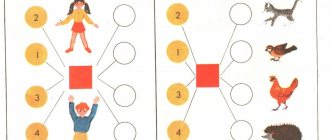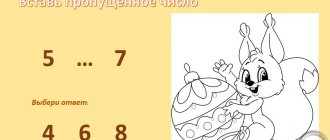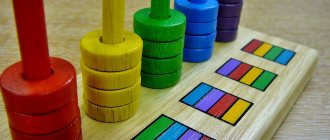Development and education of children from 2 to 11 years old in a playful way
Start practicing right now
Start practicing
Play, play, play... If you constantly hear this request from your child, then you are very lucky! It is through play that a child learns about the world, absorbs new information, gets acquainted with the surrounding reality and learns to interact with people. But in order for games not only to entertain, but also to provide benefits, it is important to make them educational. Such games allow the child to gain knowledge in an entertaining way, as well as acquire an important ability for self-learning. What educational games should you choose? Read about it in our article!
Games for kids
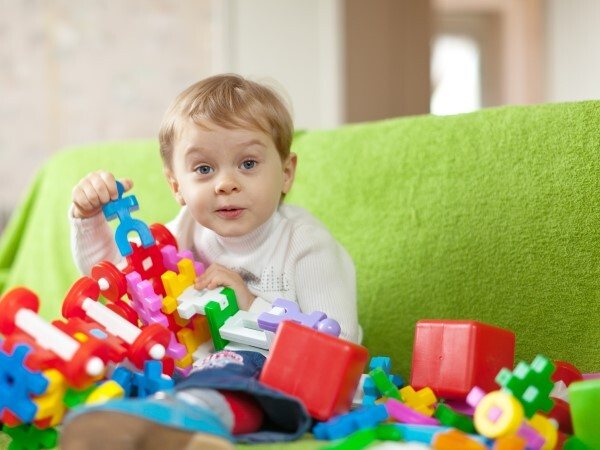
The little ones who are just discovering the world of educational games will definitely appreciate simple and entertaining tasks in which, with the help of bright and familiar pictures, they can learn the names of vegetables, learn to distinguish clothes and shoes by weather and seasons, as well as distinguish objects by size and find identical pictures. Make games with your kids even more interesting by connecting your favorite toy to this: you can consult with it, it can give hints, ask leading questions and sometimes even answer instead of the baby.
Games for girls
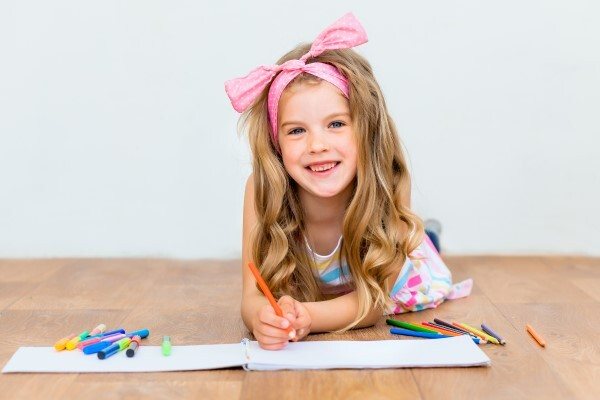
It is obvious that the interests of little princesses are focused on quiet games that introduce flowers and clothes, dishes and furniture, plants and animals. Educational games for girls will help you learn the colors and their names, sweets and special features of the holidays, and teach you how to assemble cute and kind puzzles with cartoon characters and heroes of your favorite cartoons. Some educational games have special themed printables for girls that you can play with offline or use to reinforce themes.
Special studies were carried out, from which the following conclusions were made:
- a child who plays computer games becomes more attentive and focused in life, which helps in the future while studying - to listen and remember more information;
- various puzzles, quests and other tasks develop logic and the ability to multitask;
- fine motor skills return to normal thanks to working with the keyboard and manipulator;
- with each new level, the child learns to analyze its complexity, and then this will help to correctly assess his opportunities in life, which, in turn, will also help in self-development;
- to relieve some nervous tension, you can choose games with elements of restrained aggression, but parents should pay more attention to them, and first choose them yourself;
- in a computer game there are no restrictions for fantasies and even for actions; this helps in developing one’s horizons and knowledge of the world around us.
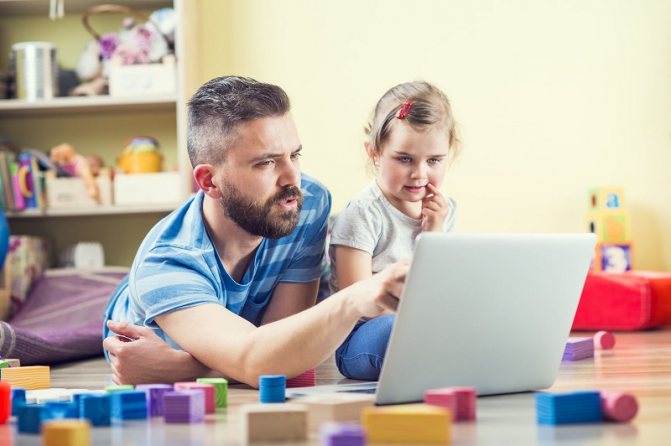
Of course, there are also negative sides to computer games, since everything cannot be so bright and beautiful. Sitting in front of a PC for long periods of time puts a lot of strain on your eyes. And sometimes the child does not want to do anything else. In the game he is forgotten and disconnected from reality, which in turn minimizes contacts with people.
But, all these disadvantages can be easily smoothed out by parents if they monitor their child, and not just turn on the tablet for him, every time just so that he “does not get in the way.” In addition, there are many different computer entertainments where parents can play with their child.
Games for children are divided into categories depending on the topic and focus.
And if we talk about children of preschool or school age, then there is a list of the best computer games for development.
Games for boys
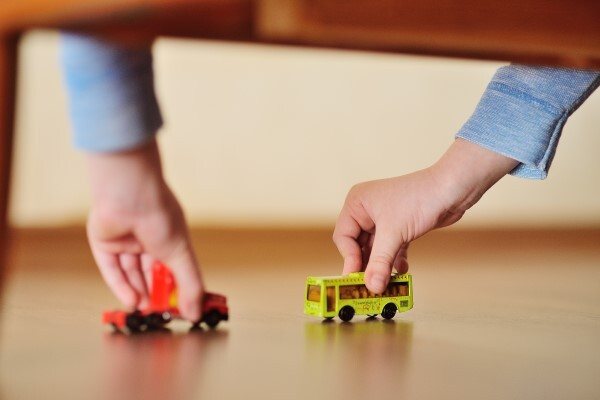
Active educational games are what mischievous fidgets need. Study transport, improve your logical thinking, get acquainted with figures and various musical instruments, trying to find their analogues: for example, instead of a pipe, try blowing into an empty glass decanter or glass and compare the sounds. Be sure to take a break between exercises so that your child does not stay too long. To do this, set up a special rest window in your Personal Account, which will allow you to break up educational games with useful breaks - modeling, appliqué, exercises or finger gymnastics.
Educational games
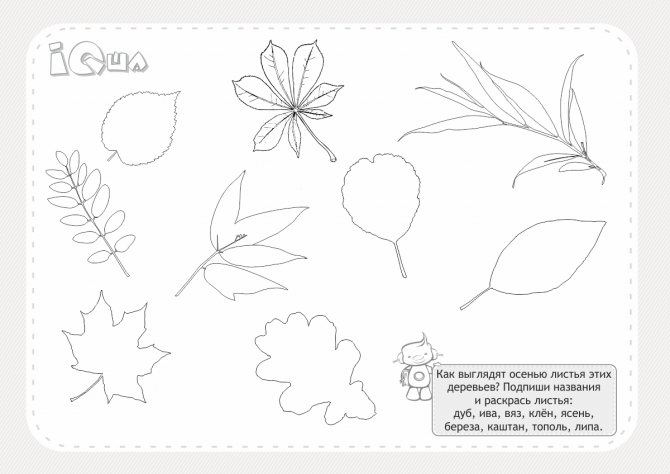
This type of educational activity will appeal to children who love to slowly and thoughtfully study the world around them. For them, we have prepared tasks for finding patterns, attention and memory, observation and eye. Develop perseverance, intelligence and horizons with the help of online games about space, stars and planets, countries and continents, living and inanimate nature.
Logic games
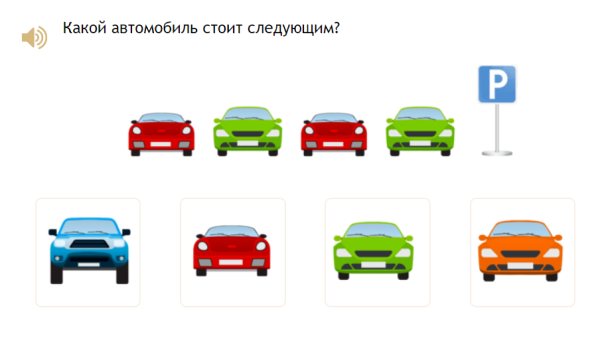
Educational games aimed at teaching logical thinking teach children to analyze and compare different pictures, stimulate reasoning and look for patterns between objects and phenomena, as well as compare and build logical connections between apparently different objects. Logic problems and puzzles in the form of entertaining illustrations and animated tasks can captivate a child for a long time and instill in him a thirst for knowledge.
Coloring pages
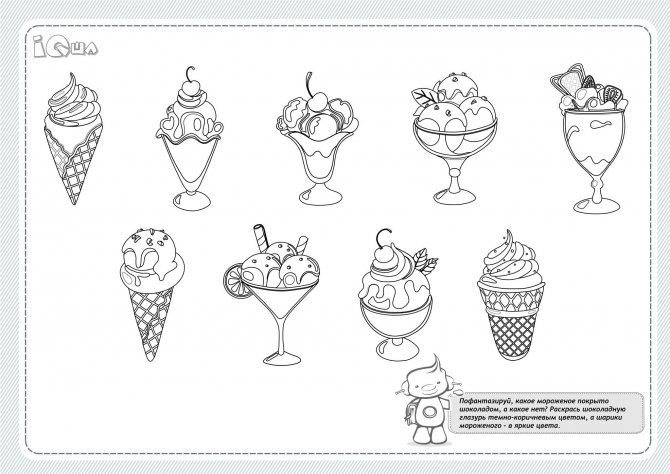
Do you want to draw, but with benefit, and at the same time motivate to learn? Use our coloring pages! They are given as a reward for correct answers, and the stories in them help to get acquainted with new topics: children's holidays, seasons and situations familiar to the child, which can then be used to create a fairy tale. Collect coloring books from Ikyusha in a separate folder and turn them into a picture book.
Development of a child’s thinking in a creative form
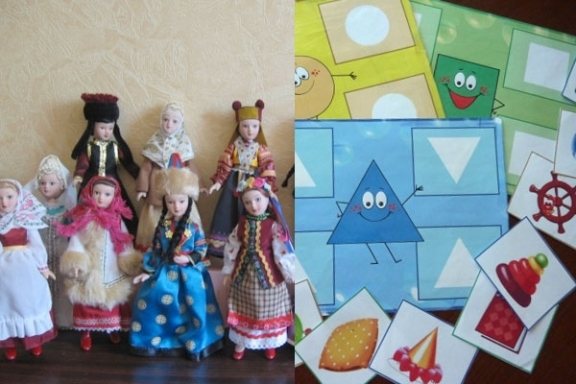
Psychologists believe that in preschool age role-playing play is the leading activity leading to the development of the child’s psyche. Trying on the role of an adult causes strong emotional experiences, regulates relationships and influences the development of character and personality. One should also take into account such positive effects on the child as the load on both hemispheres of the brain, which is necessary during lateralization and develops creative and analytical abilities, getting rid of pseudo-concepts and overcoming negativism.
Games for children unobtrusively teach new skills, develop thinking and imagination, and help establish control over behavior. In a playful form, it is easier and more effective to convey information, teach how to concentrate and solve problems. Modeling a variety of activities makes it possible to learn new experiences and acquire original models of individual behavior. The process brings joy and pleasure to the child, he easily gets involved and shows genuine interest, independently understands the tasks and actively searches for answers, tries to cope with difficulties.
Original creative programs will appeal to girls and boys, will help in mastering knowledge and skills, and will bring benefit and variety to learning.
All sections
Puzzles
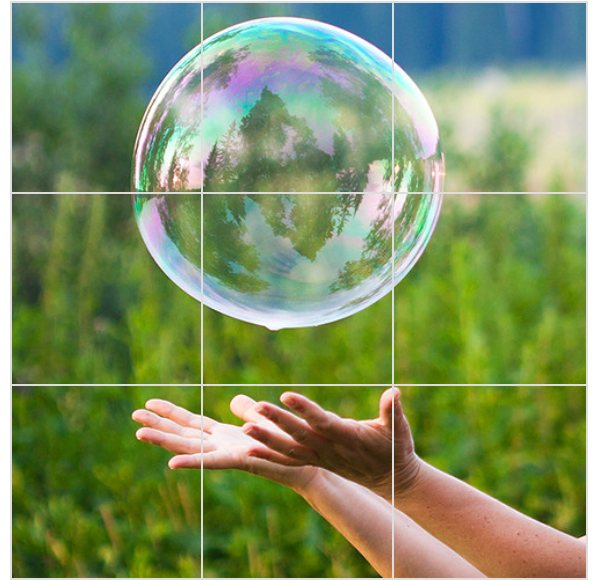
An educational game that can be played on any device, even without the Internet. Now you don’t need to take with you many boxes of puzzles and worry if some piece is lost. Just select and download a mosaic in our application to play offline, and then assemble the puzzle by completely disconnecting the Internet. We have mosaics with many details and subjects: animals, numbers, letters, furniture, plants, geography, family, etc.
Methodological development “Teaching children through play” educational and methodological material on the topic
LEARNING CHILDREN THROUGH PLAY
In recent decades, the content of play for modern preschoolers has become impoverished. Children cannot develop the plot of the game, and if they decide on a plot, it can be meager, monotonous, without creative ingenuity and enthusiasm. Another problem is that the game is real, full of game events, and is being replaced by game techniques. According to T.I. Babaev, games independently invented by children help enrich their creative potential, activate the mechanism of self-expression, improvisation and imagination.
It is not for nothing that the game is called “leading” - it is thanks to it that the child gets to know the world of objects and people around him, enters the world of social relations, the community of adults. Through play, a child learns about himself and his capabilities. “A game is a spark that ignites the flame of inquisitiveness and curiosity,” noted V.A. Sukhomlinsky
A characteristic feature of role-playing play is the independence of children, when they themselves choose the topic of free play, determine how it will develop in the future, how the roles will be distributed, who will be the play partner, etc. Each child is free to choose the means of embodying the image. At the same time, nothing is impossible: you can, sitting in a “rocket” chair, find yourself on Mars or the Moon, with the help of a “magic” wand you can find yourself at a ball or fly on a magic carpet. Such freedom in realizing the game’s concept allows the child to fantasize, invent, and solve problems not only for himself, but also for his hero.
Pedagogical support for story-based games should be aimed at preserving the independence of play and awakening play creativity in the child.
According to T.I. Babaeva’s pedagogical support for play on the part of the teacher is a complex mechanism of natural assistance to the child. It includes both direct play interaction and observation of his play behavior, studying the possibilities of its development.
The social nature of the content of games and play activities is due to the fact that the child lives in society, interacts with the environment, people, and nature. Everything he observes, absorbs into himself, is reflected in his free, independent games. It is very important not to direct the children’s play, but to provide support and accompaniment, enriching the children’s life experience, and, if necessary, participate in the game as a full-fledged partner.
Children's right to play is addressed in the Convention on the Rights of the Child, among other vital rights (Article 31). At the same time, this right is violated much more often than other rights of the child. The reasons for violations can be called: lack of understanding by adults of the importance of the game; lack of an adequate subject environment that supports independent play; the pressure of educational tasks and the priority of learning; strict programming of children's free time. The main reason is that the right to play is declaratively recognized by adults, but not ensured.
How to help children organize play? How to bring independent play back into children's lives? What methods of pedagogical support for the game should be used? These and many other issues are resolved in the course of methodological work with teachers of preschool educational institutions.
We hope that the proposed material will be useful in working with preschool teachers, will help to understand the issues of development of preschool children through play activities, understand the importance of free independent play for learning, for the development of early and preschool children in all areas; update professional skills; reflect on one’s own gaming experience and the experience of supporting students’ games; learn the ways and stages of development of the game at different age periods; understand the importance of creating a gaming environment and modeling the conditions for game development; the ability to use the observation method as the main means to identify the achievements and needs of a particular child to ensure comfortable and effective participation in the game.
In our understanding, play is a free activity devoid of coercion, characterized by spontaneity, activity, improvisation, often without a specific goal, a specific result, or even a specific object, but always emotionally rich, giving the players a feeling of pleasure and joy.
Reflection on gaming experience
The goal is teachers’ reflection of their own gaming experience and experience of supporting students’ games.
- At what age did playtime end for you?
- Can we say that you are still playing?
- When you were little, what games did you play?
- Who did you especially enjoy playing with?
- Do you remember any moments when you learned to play and how it happened?
- Where did the games take place?
- Can we say that they sought to play in the presence or close proximity of adults?
- What exactly did you do during the game?
- Did you have any particularly memorable toys?
- What materials did you use (real toys, utility items, combined ones, made yourself)?
- What did you learn while playing?
- What feelings did you experience while playing on your own?
Summary:
People play at all ages. For a preschooler/somewhat younger schoolchild/game is a natural state of inner world and external behavior. Children who play prefer not to allow “outsiders” into their world. Most games are based on imagination. The game demonstrates intelligence, passion, activity, organizational skills, etc.
Theoretical foundations and meaning of the game
There are many definitions of the concept “game”. The Russian language dictionary defines a game as “an activity, an occupation of children, determined by a set of certain rules, techniques and serving to fill leisure time and entertainment.” From a psychological and pedagogical point of view, the game is considered as a type of activity aimed at recreating and assimilating social experience, in which self-government of behavior is developed and improved. Z. Freud, J.A. Comenius, M. Montessori, G.V. Plekhanov came to the conclusion that the game arose in primitive society, but changed with the advent of progress in people’s lives. Role-playing is a consequence of the child’s need for active participation in the lives of adults. The game is social in its motives, origin, content, structure, functions (L.S. Vygotsky, A.N. Leontiev, S.L. Rubinstein, etc.). The child generalizes play methods and transfers them to other situations. Thus, the game acquires self-propulsion and becomes a form of the child’s own creativity, which determines its developmental effect.
Exercise:
- Formulate and write down your version of the concept of “game”.
- Answer the question: “Why is there no unambiguous classification of children’s games.”
- Show with examples the importance of children's play in the development and upbringing of children.
Stages of development of gaming activity
Early childhood is characterized by games of manipulation with toys; play actions are of an introductory, plot-displaying nature. The child masters the purpose of things.
The next stage of development is a plot-role-playing game (a game with meaning according to D.B. Elkonin), in which such mental new formations arise as the ability to endow oneself, a partner, an object or an action with playful meaning, meaning.
Games that arise on the child’s initiative are amateur (A.V. Zaporozhets), the content is determined by the internal “spontaneous” laws of self-development. One of the indicators of the development of a role-playing game is the method of solving a “game problem”, which is becoming increasingly generalized and conventional.
D.B. Elkonin identified and characterized the social context of the development of the game, highlighting four levels (stages) of its development.
First level. The content of the game is actions with objects, the game is limited to acts of everyday actions - feeding, rolling, rearranging toys.
Second level. The content of the game is still actions with objects, but the correspondence of the game action with the real one comes to the fore. The roles are named, the logic of actions is determined by the life sequence.
Third level. The main content of the game becomes the fulfillment of a role and the actions arising from it, among which there appear actions that convey the nature of the relationship with other participants in the game. The roles are clearly defined and highlighted, have a name before the game begins, and determine and guide the child’s behavior. A specific role-playing speech appears, addressed to the playing partner.
Fourth level. The main content of the game is to perform actions related to relationships with other people, whose roles are performed by other children. Roles are clearly defined and highlighted. Role functions are interconnected. The speech is role-playing in nature, actions unfold in a clear sequence that strictly recreates real logic.
Exercise:
Determine at what stage of play development these children are:
— Likes to carry, carry, splash in the water, play alone or nearby.
— Tries to take on the best roles, organize a game, come up with something interesting;
— Children quarrel over a toy, each one pulling it towards him;
— Children enthusiastically play on a sea voyage (they prepare a ship, sail to hot countries, after a moment the ship becomes an icebreaker sailing to the North)
Types of games. Role-playing games
A distinctive feature of free role-playing game is that it is created by the children themselves; the play activity is amateur and creative in nature. The originality of the content is determined by the peculiarities of perception of the surrounding reality, children’s understanding and comprehension of certain facts and phenomena. Free role-playing game is characterized by: emotionality, richness, passion, initiative, activity, creativity, cooperation.
The diverse developmental value of role-playing games. The formation of self-esteem and self-awareness occurs, a symbolic function of consciousness takes shape, which involves the use of their substitutes instead of real objects (this is how a brick becomes an iron or a train).
Independent play is not regulated. It can be organized, but not imposed on the child.
The structural components of a role-playing game are identified: plot (content), roles (game action).
When choosing methods and techniques for developing role-playing games, it is necessary to take into account the principles proposed by N.Ya. Mikhailenko, N.A. Korotkova.
It is important to encourage children to express original ideas; use a personal example of a creative approach to solving game problems.
Questions for teachers
- Tell us about the role-playing games that exist in your groups.
- How many children are involved in the games? Are playgroups sustainable?
- Who is the organizer of the games? What is their duration?
- How do relationships develop between playing children?
- What methods do children use to resolve play conflicts?
- Do you get involved in children's games? What is your role? Who organizes the play environment?
- Do children know how to play independently, calmly, and with concentration?
- Are there any children who don't play? Are there single player games? Their type, theme, content. How are the individual characteristics of children taken into account in the game?
- In your opinion, do parents understand the value of play in preschool age? What are you doing for this?
Exercise
Think over methods and techniques for activating and supporting children’s play activities in role-playing games - “Travel”, “Hospital”, Transport”, “Circus”, etc.
Construction games
Construction and constructive games meet the interests and needs of preschool children and at the same time have ample opportunities for the development of technical skills, the ability to analyze objects in the surrounding reality, the formation of generalized ideas about objects, the development of spatial thinking, creativity, artistic taste, sensory abilities, the formation of valuable personality traits ( purposefulness, perseverance in achieving goals, ability to negotiate, etc.)
In games, children use different types of building materials, construct from paper, waste, natural materials, and various types of construction sets. The person provides mutual learning and the opportunity to exchange experiences among children. Sometimes children are captivated not by the plot, but by the technical side of the matter; the child solves constructive problems, showing his individuality.
Questions for teachers
— What is the importance of constructive and construction games in the development of preschool children?
— What types of building and structural materials are used in your group? How often do children use non-traditional materials?
— What is unique about children’s construction games? How are they related to role-playing games?
Gaming Capability Training
Goal: awakening creative imagination, understanding the driving forces of game action and their influence on personality development.
Preschoolers are great dreamers. Sometimes everything they see and hear creates incredible ideas in their minds, in which truth and fiction are intertwined in the most unexpected way. We will not only not debunk fantasies, on the contrary, we will support them, giving them meaning and form. This form will be a GAME, but one that needs to be invented, made together, and only then can it be played with friends. Types of games:
Board games. Construction and construction games. Dramatization games, theatrical improvisations. (A variety of waste, natural and other materials are offered. In practical work, teachers make the necessary attributes for the proposed games and play with them)
Questions for discussion:
What did you do with the submitted materials? How the activities were organized; what were you thinking? How did you feel during the activity? What did you practice? What did you (possibly) learn, including from each other?
Summary: any game (self-selected, initiated by adults, individual or partner) has an integrative nature. If the game unfolds on the basis of improvisation, that is, it allows freedom of plot twists, role-playing actions, inclusion and exit of players, compliance with game rules, then such a game can be considered a free creative developmental game. The game does not require idealization of conditions, but the manifestation of imagination, inspiration, accessibility, and support.
Play and Key Development Areas
Goal: to make it clear that play, depending on the age of the child, affects his development in all educational areas.
The federal state requirements for the basic general education program state that it is necessary to “assume the construction of the educational process on age-appropriate forms of work with children in the form of games, conversations, reading, observations, etc. The main form of work with preschool children and the leading type activity for them is a game.”
The tasks of psychological and pedagogical work on the formation of physical, intellectual and personal qualities of children are solved in an integrated manner, in the course of mastering all educational areas, so that children form a holistic idea of an object or phenomenon, and the content of the educational area “Socialization” is aimed at including children in the system of social relations through the development of gaming activities.
What happens to a child when he freely, of his own desire and choice, maintaining his own interests, interacts with people or objects? He independently studies the basic rules and patterns of functioning of the world around him. Through trial and error, from observation and analysis of what he sees, the child learns about the world around him, himself and other people and enters into certain relationships with them.
The emergence of a plan is associated with the development of creative imagination. Cognitive and research activities permeate all areas of children's life, including play activities. Play in exploration often develops into real creativity.
In theatrical games, children's activities take the form of either dialogues or monologues on behalf of the characters; visual activity is of a spatial-visual, design nature; children create drawn or applique forms of decoration; musical activity manifests itself especially actively in theatrical games, playing the organizing role of the rhythmic side of stage action.
According to L.S. Vygotsky - “A child’s play is not a simple memory of what he has experienced, but a creative processing of experienced impressions, combining them and building from them a new reality that meets the needs and drives of the child himself.” Here L. S. Vygotsky points out that imagination and creativity are rooted in the game of “make-believe,” but they are not yet fully formed and need material support.
Subgroup task:
— Reveal an understanding of the essence of the game and the difference in each age period: early (1-3 years), junior (3-5 years), senior preschool age (5-7 years).
— Can children of different ages use the same materials and equipment during play? Give examples.
- From the proposed materials (pictures, cubes, cones, etc.), come up with an integrated educational game situation.
Creating conditions for the game
Goal: developing ideas about a stimulating and supportive object-game environment.
One of the most important factors in the development of a child’s personality is the environment in which he lives, plays, learns and relaxes.
Modern child-centered preschool education recognizes that early and preschool children learn most organically through play, directly interacting with the people and objects around them. Teachers realized how important it is for children to freely experiment with materials without fear of mistakes and condemnation, and how interesting in content and extraordinary in performance their ideas can be.
Educators must understand that the play environment around children should reflect the differences between children, their interests and needs; equipment and a variety of materials should be available to every child. These materials should be informative, modern and non-traditional, be in the child’s field of vision and always “at hand,” arouse curiosity and stimulate their exploration.
It is important to provide children with the opportunity to constantly transform the object-based play environment by having sufficient multifunctional, non-traditional play material available that optimizes the child’s mastery of the position of the subject of the director’s game.
Exercise:
- Observe children’s play and determine the characteristics of the development of their cognitive abilities.
- Invite teachers to explore different materials and find out what educational information can be obtained.
- Invite teachers to depict the world around them
- Think and write down what children can learn in different corners/centres.
- Come up with 2 game models of the subject-spatial environment.
Game as a form of organizing educational activities
In the traditions of Russian preschool education, the use of various types of games: didactic, active, theatrical, role-playing, etc. The arsenal of gaming techniques used by teachers for the purpose of teaching and developing a child is even more extensive. The game from a self-valued, self-developing and self-developing culture is transformed into a “game with predetermined goals.” Gaming freedom is replaced by gaming necessity. Intrinsically motivated play is replaced by gaming as an external motivation to participate in learning. Consequently, recognizing the role of play as “leading and determining,” teachers predominantly “allow” and use it as a form of influence, a means of manipulating the child.
Different forms of organizing activities are also associated with their different motivations. The motive of the game is the pleasure that the child experiences from the very process of the game.
In theory, teachers have adopted the idea of providing children with the opportunity to choose not only the content, but also the type, method, sequence of actions, materials and equipment, partnerships and place of work, which allows children to acquire the skill of proactive, conscious actions, the ability to set and solve various problems, and develops confidence in their competence and ability.
Assessment of the situation in the child's development. Observing children playing.
Goal: developing professional skills in making observations and reflecting on what is seen from the perspective of achievements and difficulties in the development of the child.
1. Observing the actions of children playing (watching videos). Individual work.
Task: note (write down) actions that characterize the age and level of development of the child’s playing skills; manifestation of the child’s individual characteristics; actions that allow us to judge the achievements of children at play. Note how fully (varied and multidirectional) personal qualities and practical skills are manifested. Note positive and destructive manifestations.
2. Describe the situation in the child’s development (creating an express portrait of achievements). Work in pairs or subgroups.
Task: learn to summarize the information received, draw conclusions, determine prospects and necessary pedagogical actions.
Summary:
Observing children playing gives an idea of the inner world, motives of actions, the nature of relationships with peers; allows you to determine the required level of support.
Gaming holidays
Goal: developing ideas about improvisation holidays as a form of gaming activity
Questions for discussion: what do you think about holidays in kindergarten; what is their purpose; who and how, in your experience, prepares the holidays; how can you describe (assess) the emotional state of children (teachers, parents) during festive events; what would you consider necessary to change in organizing holidays, etc. How do you understand the saying: “If you take a little imagination and add to it a handful of creativity, a little childish enthusiasm, you will get what you dreamed of - a holiday will come to your street” (N. Rublenko).
Holiday improvisation
The holiday is the finale of the project
Calendar holidays
Assignment for participants: Read a brief description of the “holiday activities”, determine your attitude and give them your assessment.
What else could become the basis of a holiday? Bubble; dough; old things; bells; naughty children (sneaks and troublemakers); brave sailors. How? Come up with it yourself or together with your children.
Outdoor games
Invite listeners to remember what games they played in kindergarten on the street? What stood out to them the most? How did they feel, what emotions did they experience from playing together? How did they find out about new games?
Simple games will help diversify daily walks with children. In addition, do not forget about such interesting activities as football, basketball, tennis, you can arrange a bowling alley. They develop accuracy, mobility, and reaction speed. In winter, organize sledding and skiing. Even making a snowman will bring a lot of pleasant emotions to children, help them develop social interaction skills, and develop aesthetic taste.
Physical exercises on the street or during excursions into nature are extremely beneficial for improving many of children’s movements and developing their motor qualities.
The simplest thing to do outside is to explore the world around you. You can tell children about trees, flowers and plants, animals and insects that you meet on walks and during excursions. You can explore and conduct basic experiments with snow, rain, watch rainbows, dew on the grass - these are incredibly interesting phenomena, especially for kids. If possible, you can photograph what the children were especially interested in, and then make a photo album as a souvenir, write down children's stories, and organize exhibitions of drawings based on memories of what they saw on a walk. Games can be played on water, sand, as well as on a specially equipped field or just an asphalt area. Psychological and pedagogical support for games of preschoolers
Goal: to develop the ability to provide timely pedagogical support to a child’s independent play.
The problem is not limited to the peculiarities of adults’ understanding of the essence of the game, its place in the education and life of children in general. No less difficult is the ability of adults (and especially teachers of preschool institutions) to play, as well as the willingness to provide assistance and support to children in developing the game.
The most important indicators influencing the effectiveness of children’s gaming activities are the conditions of the organization. Pedagogical support for story-based games should be aimed at preserving the independence of the game and awakening gaming creativity.
The concept of pedagogical support is consonant with the concept of pedagogical support. You can only support what already exists, but at an insufficient level, i.e. according to O. Gazman, the development of child independence is supported. As soon as he has a desire to join something, difficulties arise, then pedagogical support comes into force.
Exercise:
- Observing the actions and play behavior of children playing (watching video recordings). Individual work.
Game interaction (with whom does he interact, about what?)
Task: note (write down) situations that require a “quick response” from the teacher. Determine the nature of pedagogical actions (what can be aimed at: prohibition, reorientation, reminder of the rules, inclusion in the game, changing conditions, etc.)
Possibility of game development (stimulation techniques).
Objective: to develop the ability to support children’s play independence.
Problems children encounter during play
Task: learn to see and provide assistance when problems arise during the game.
5. Work with pedagogical situations “Are these children playing” in pairs or subgroups.
Task: learn to analyze the information received about the child’s play actions.
6. Analysis of the gaming experience of children in their group. Determining the tasks of pedagogical support for the gaming experience of children in their group.
7. Analysis of interpersonal problems and ways to solve them (aggression, rivalry, primitivism of game actions, etc.)
Supporting play in a family setting
Goal: understanding ways to involve parents in the gaming culture of preschoolers
A kindergarten can be an example for parents in respecting and recognizing the child’s right to play, in creating conditions for play, in understanding the child’s achievements acquired and demonstrated by him in play.
Compare the positions of the parents: “You can take everything you need to play if it does not threaten life and health” (M. Arbatova) and “You can only play with your own toys.”
Problems that need to be solved: 1) due to the transfer of a significant part of educational tasks and activities to an informal, non-specifically organized form (joint and independent activities), many parents may have a misunderstanding of the activities of the kindergarten.
- Some parents do not support the child’s play activity at home, do not know how to choose the right games and toys, organize a play space for the child, and provide support in play interaction.
Assignment to participants: continue to describe the options for actions in the bathhouse (bathroom) and/or write a similar “cheat sheet” for parents about play activities with children in the kitchen, in the yard of the house, while going to the store, etc.
| Games … | ||
| When you and your child are together | You can tell or ask | This will help your child |
Puzzles
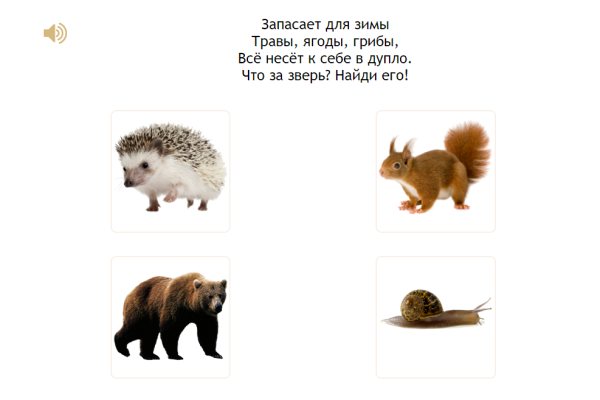
Something that all kids love! With and without rhyme, about animals and letters, about logic and intelligence - this is a favorite educational game for children of all ages. All our riddles not only entertain, but also educate and test knowledge. Each task has an illustration and explanation of the correct answer, so that the child learns to think and crack riddles like nuts.
Games for preschool and primary school children
By groups:
- Senior group
- Preparatory group
- Middle group
- Junior group
Showing publications 1-10 of 36016. All sections | Children's games
New
Photo
The best
Game as a means of speech development Game is the leading activity of a child. 1. The game develops communication skills; there is a place for partnership based on respect for the child, even a small one. 2. Cognitive interest develops. It is much easier to teach a child while playing , this is facilitated by...
Financial literacy game “What? Where? When?" for children of senior preschool age Game “What? Where? When?"
for children of senior preschool age Lyungrin Olga Evgenievna Educator of MADOU MO Nyagan,
Kindergarten No. 6 “Rowan”
Tasks: 1. Continue to teach how to play educational
games ; follow the rules of the game ; be reserved; skillfully answer questions...
Math games
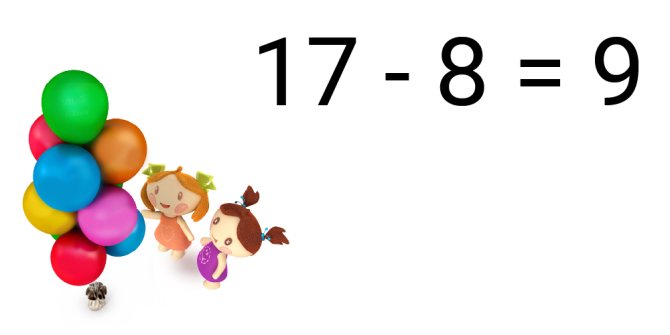
If your child is tired of counting everything around him, offer to complete our animated tasks for knowledge of numbers, ordinal counting and number comparison. Who has the most balls and who ate the least carrots? Learn to count from 0 to 100, practice counting backwards, strengthen your ability to distinguish the image of a number and try to solve your first problems with IQ!
ABC
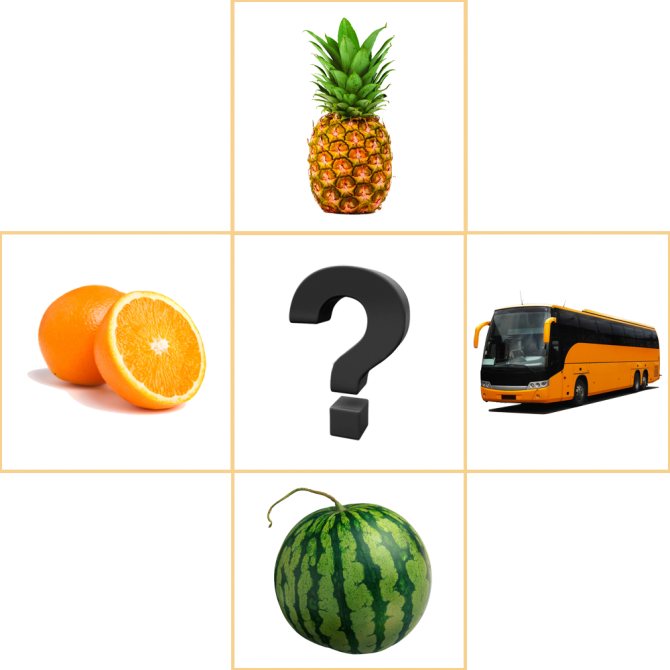
What does the letter A look like? How many words starting with this letter can you find around? Online alphabet and educational games for learning the alphabet will help with this! We have come up with 33 colorful and brightly illustrated exercises for each letter that will help your child name, distinguish visually and auditorily, as well as pronounce and read letters. Our alphabet course is the first step to reading, which will turn the learning process into an exciting quest.
Children's games - Games and exercises for the development of fine motor skills in preschool children
Publication “Games and exercises for the development of fine motor skills in preschool children...” Games and exercises for the development of fine motor skills in preschool children. It is now known that at the initial stage of life, it is fine motor skills that reflect how a child develops and indicate his intellectual abilities. Children with poorly developed manual motor skills...
Image library "MAAM-pictures"
Play-game “Matryoshka has a housewarming party” (junior group) Target: has an idea of the sights of his hometown; knows how to talk about a holiday in the city. Priority educational area: speech development in the integration of educational areas: “physical development”, “cognitive development”. Technologies,…
Walking game “Travel around your hometown”
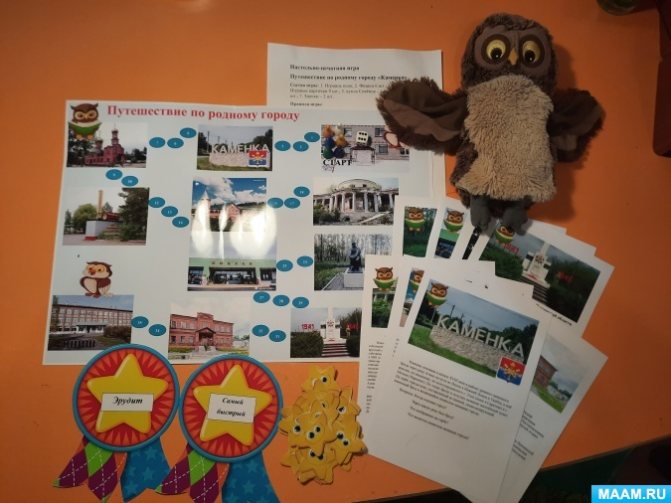
Printed board game Journey through the hometown “Kamenka” Goal: to develop in children a sense of love, pride in their small homeland, and attachment to their hometown. Objectives: - To form patriotic feelings. — Expand knowledge about the history of the city, its...
Games to develop in children the ability to coordinate words in a sentence, to correctly use prepositions in speech “Say it correctly” Goal: to teach to coordinate pronouns with nouns and adjectives in meaning. Procedure: Children choose a vegetable or fruit of their choice and stand in one line. The first child says, “This is my apple,” and takes a step forward. The next one says: “This is my cucumber” and...
Children's games - Leisure "Journey to the Land of Winter Games"
Article “Leisure “Journey to the Land of Winter...” PROGRESS OF ENTERTAINMENT Children enter the hall accompanied by a cheerful march and form a line. INTRODUCTORY PART Instructor: Hello dear guys and our valued guests! Today I want to invite you all to the “Land of Winter Games and Entertainment”. But for this you need to take with you a sporty character and...
Master class on making an attribute from a plastic cup and fabric for the game or dance “Ice Cream”

For dancing, as well as for the plot game, ice cream is sometimes necessary. My option is safe and also the most budget-friendly. And so we need a cup, it can be paper, preferably made of thick paper, or plastic, it’s better if it’s a bright, plastic ball made of...
Games and exercises to relieve emotional stress in preschoolers GAMES AND EXERCISES TO RELEASE PSYCHOEMOTIONAL TENSION Everyone knows very well that a person’s mental state and his well-being are closely interconnected. The absence of physical pain gives a person the basis for a positive emotional state. At the same time positive...
Memo for parents “Winter games on a walk” Dear parents! When going for a walk with your child, take different toys with you. These could be shovels, buckets, molds, a toy dump truck, a ball, a sled, skis, or ice cubes. Toys should be plastic so they can be easily washed. Do not take indoor toys outside. In games...
Pages: … 3602

